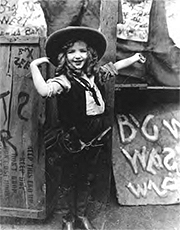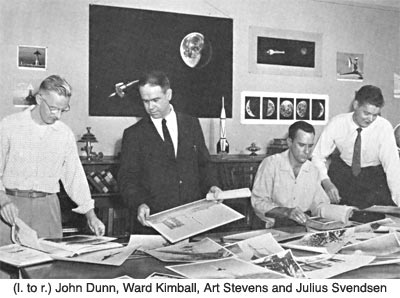

Misplaced Honor
ASIFA-Hollywood has announced the three recipients for this year’s Winsor McCay Lifetime Achievement Award and they are Don Bluth, Virginia Davis and Arnold Stang. Now, Bluth, despite what I personally think of his filmmaking skills, has every right to this award. But the other two choices are extremely questionable, and in light of other potential recipients, downright irresponsible selections by ASIFA-Hollywood. The goal of the Winsor McCay Award, as stated in ASIFA-Hollywood’s own rules, is to recognize “lifetime contributions to the art of animation in producing, directing, animating, design, writing, voice acting, sound and sound effects, technical work, music, professional teaching, or for other endeavors which exhibit outstanding contributions to excellence in animation.”
 Last year, I suggested an artist named Art Stevens, who was a forty-plus year veteran of Disney. I didn’t push for him again this year because as much as I’d like to see him honored, it’s not my job to make sure that happens. It’s the responsibility of the Winsor McCay Award Selection Committee (whoever the heck that comprises) to properly perform their duties and recognize the most appropriate people for the award. Which begs the question, how in the world did they ever arrive at Virginia Davis, whose contributions to this art form have been minimal to non-existent. Davis, for those who don’t know, was the four-year-old girl who portrayed the live-action Alice in Walt Disney’s early animated/live-action series “Alice in Cartoonland.” That may hold some minor historical significance for animation history buffs, but how has her work exhibited “outstanding contributions to excellence in animation?” Davis’s “animation career” lasted no longer than a couple years when she was four and five years old. Her contributions even during this time were not particularly unique; in fact, Alice was portrayed by at least two other actresses besides Davis in these early Disney shorts. The significance of the films lies in the fact that they are Walt Disney’s earliest works and show his development as an artist; nobody can seriously make a case that Virginia Davis’s contributions to those films helped animation develop as an art form. She was simply a little girl who happened to be at the right place at the right time.
Last year, I suggested an artist named Art Stevens, who was a forty-plus year veteran of Disney. I didn’t push for him again this year because as much as I’d like to see him honored, it’s not my job to make sure that happens. It’s the responsibility of the Winsor McCay Award Selection Committee (whoever the heck that comprises) to properly perform their duties and recognize the most appropriate people for the award. Which begs the question, how in the world did they ever arrive at Virginia Davis, whose contributions to this art form have been minimal to non-existent. Davis, for those who don’t know, was the four-year-old girl who portrayed the live-action Alice in Walt Disney’s early animated/live-action series “Alice in Cartoonland.” That may hold some minor historical significance for animation history buffs, but how has her work exhibited “outstanding contributions to excellence in animation?” Davis’s “animation career” lasted no longer than a couple years when she was four and five years old. Her contributions even during this time were not particularly unique; in fact, Alice was portrayed by at least two other actresses besides Davis in these early Disney shorts. The significance of the films lies in the fact that they are Walt Disney’s earliest works and show his development as an artist; nobody can seriously make a case that Virginia Davis’s contributions to those films helped animation develop as an art form. She was simply a little girl who happened to be at the right place at the right time.
Arnold Stang, though hardly as poor a choice as Davis, is also a questionable award recipient. Yes, he was the voice of Top Cat and Herman (in Paramount’s Herman & Katnip theatricals), but his contributions as a whole to the development of animation are hardly on the scale of other voice actors like Daws Butler, Mel Blanc or June Foray. Stang deserves some sort of recognition for having worked in so many different fields (animation, radio, TV, film), but his involvement with animation is relatively minor, at least when compared to other possible contenders like Art Stevens. Since ASIFA-Hollywood obviously has no intention of recognizing deserving talents like Stevens, let’s examine his career here on Cartoon Brew.

Stevens started at Disney in 1940 and retired in the early-’80s. That’s over forty years of uninterrupted service to the animation industry. In the Forties, he became one of John Lounsbery’s top animation assistants, before becoming a full-fledged animator on PETER PAN where he animated sequences with “The Lost Boys.” Immediately following this, Ward Kimball hand-picked him to join his unit. Stevens, along with Julius Svendsen, became Ward’s most trusted animators for the next twenty years. Stevens animated on MELODY and the Oscar-winning TOOT WHISTLE PLUNK & BOOM. He was responsible for animating the “strings” section as well as other sequences in the latter film. When Ward began producing the space specials, Stevens and Svendsen handled nearly all of the ‘cartoony’ animated sequences in those films. The underwater sequence in BEDKNOBS AND BROOMSTICKS and most of the character animation in the Oscar-winning IT’S TOUGH TO BE A BIRD, were also the handiwork of Stevens. His other animation credits include 101 DALMATIANS, WINNIE THE POOH AND THE BLUSTERY DAY and ROBIN HOOD. Stevens moved into the directorial post on THE RESCUERS (following Lounsbery’s mid-production death) and also served as director/producer on FOX AND THE HOUND before retiring from the studio. There’s dozens of other projects in between these, but perhaps Stevens’s most important contribution to animation was the style of animation that he and Svendsen developed in Kimball’s unit. Both of them were geniuses at figuring out how to selectively move body parts and creating hilarious animation cycles that took full advantage of the heavily stylized characters in Kimball’s films. To this day it remains some of the most perfectly realized and elegant examples of stylized (or ‘limited’) animation ever produced.
If Stevens doesn’t catch your fancy, I could name numerous other artists who have contributed heavily to the development of animation and who are still alive, awaiting recognition: Ed Friedman, Bob McIntosh, Paul Sommer, Bob Godfrey, Brad Case and Fred Crippen just to name a few. But hey man, it’s ASIFA-Hollywood’s Lifetime Achievement Award, and if bestowing it upon somebody whose only animated accomplishment is prancing around on camera when she was four-years-old is what ASIFA-Hollywood thinks is appropriate, then so be it. I guess next year, we can look forward to the organization honoring the Mexican actress who appeared with animated Droopy in the closing scene of Tex Avery’s SENOR DROOPY. After all, it’d hardly be appropriate if they honored somebody who actually worked in animation.
